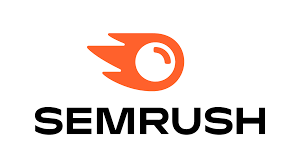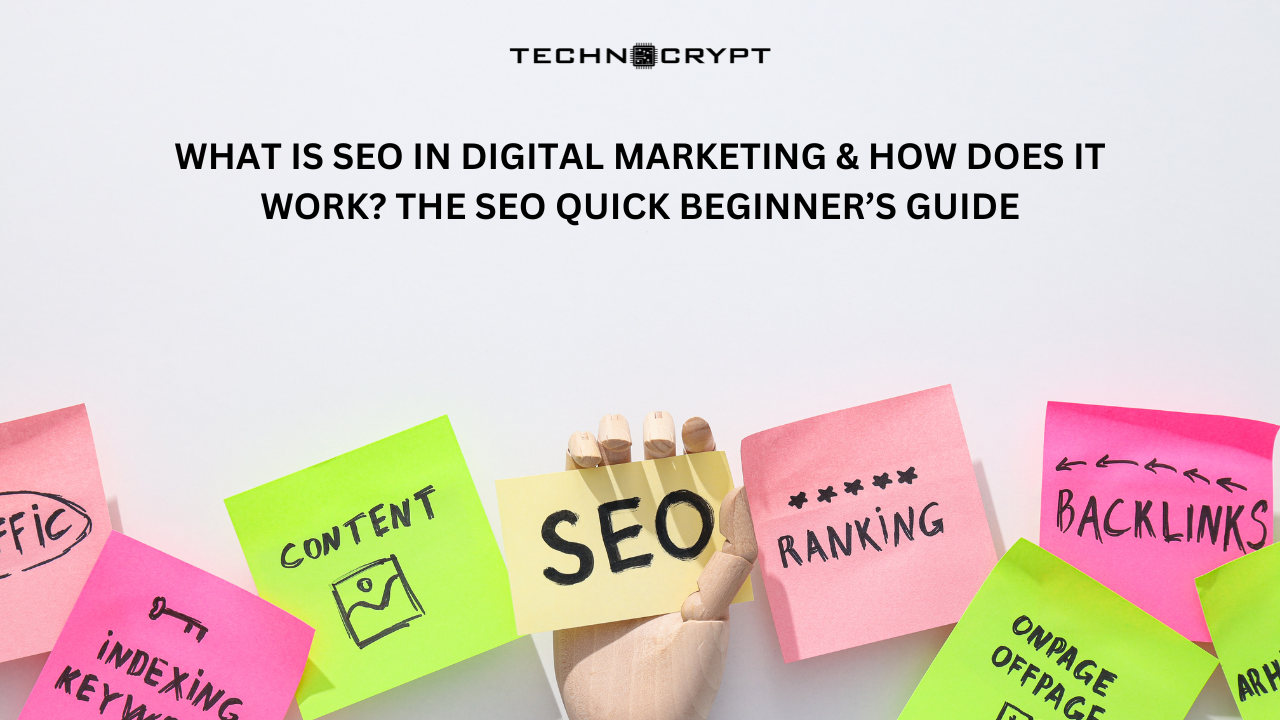Have you ever wondered what makes certain websites stand out on Google while others get left behind? That’s because of SEO! That’s the magic of SEO or Search Engine Optimization. It’s like a roadmap that helps people discover your site. Whether you’re running a business, sharing your passion through content, or just curious about how it works, understanding SEO is the key to getting noticed online and making your mark.
SEO focuses on crafting the perfect pitch to impress search engines like Google, Bing, or Yahoo, which is a crucial aspect of comprehensive SEO in digital marketing. It’s about designing your website in a way that makes it impossible for them to ignore. By aligning your content with what users’ search queries reveal they’re looking for, SEO ensures your site gets noticed by the right audience—organically, without spending a dime on ads. It’s where creativity meets strategy, opening the door to more search traffic and better connections online through content marketing.
The Three Pillars of SEO

On-Page SEO: Crafting Web Pages
On-page SEO refers to the heart of your website’s strategy. It focuses on everything within your control—content, structure, and design. Imagine your website as a storefront: on-page optimization is how you decorate it, arrange the shelves, and display your best products to attract visitors and keep them engaged. At its core, on-page SEO refers to aligning your content with both search intent and search engine preferences.

A significant aspect of on-page SEO is crafting compelling titles and meta descriptions. A well-written title and meta description grab attention, highlight relevance, and entice users to click. Beyond this, structuring your content effectively helps search engines understand and rank your pages more effectively.
Creating high-quality, engaging content is the cornerstone of SEO techniques. Your content should provide value by solving a problem, answering a question, or simply entertaining your audience. This helps search engines crawl and index your pages effectively. Visual elements, such as optimized images with descriptive alt text, are also vital for creating a site’s search experience that is seamless for users and appealing to search engine crawlers
Off-Page SEO: Building Your Online Reputation
While on-page SEO refers to your website itself, off-page SEO focuses on how the rest of the internet perceives your site. This builds your credibility, authority, and trustworthiness in your niche. Off-page optimization tips include earning high-quality backlinks, leveraging social media, and encouraging brand mentions. These tactics act as signals to search engines that your content is valuable and authoritative.

One of the most powerful off-page strategies is earning high-quality backlinks from reputable websites. Backlinks act as votes of confidence, showing search engines that other trusted sources vouch for your content. However, it’s not just about quantity; quality matters more. A single link from a highly authoritative site can have a greater impact than dozens from low-quality sources.
Off-page SEO may be less visible than on-page efforts, but its impact is profound. A strong off-page strategy not only boosts your rankings but also enhances your brand’s reputation, making your site a go-to resource in your field of search marketing.
Technical SEO
Technical SEO is the backbone of your website’s performance, ensuring that everything runs smoothly behind the scenes. It focuses on the nuts and bolts that allow search engines to crawl, index, and rank your site effectively.
A critical aspect of technical SEO is optimizing site speed and performance. Studies show that users abandon websites that take more than a few seconds to load, and search engines penalize slow sites in rankings. Compressing images, using fast hosting, and enabling browser caching are just a few ways to ensure your site runs at lightning speed.

Equally important is mobile optimization. With the majority of internet traffic now coming from mobile devices, your website must look and function flawlessly on smaller screens. Responsive design and mobile-friendly navigation are essential to providing a positive user experience and maintaining your search engine rankings.
Another powerful tool in technical SEO is structured data markup, which helps search engines better understand your content. By providing clear, specific information about your site’s pages, structured data can lead to enhanced search results, such as rich snippets, that grab user attention. Finally, XML sitemaps act as a roadmap for search engines, guiding them through your site’s structure and ensuring all important pages are indexed.
Technical SEO might seem intimidating, but its impact is transformative. When your website is technically sound, you create a solid foundation for your other SEO efforts to thrive.
How Search Engines Think (Yes, They Think!)
Search engines operate through three main processes: crawling, indexing, and ranking. These processes allow search engines to discover, organize, and present relevant web content to users.
Crawling
Crawling is the first stage of the process, where search engines send out automated programs known as crawlers or spiders to explore the web. These crawlers are constantly moving through the internet, just like digital explorers, scanning pages and collecting data along the way.

Crawlers start by visiting a webpage and examining its content, including text, images, links, and overall structure. They don’t just look at the content on one page—they follow links from that page to other pages, gathering data from across the web. This link-following behavior allows crawlers to discover new content and connect the dots between various pages on the internet.
The crawlers don’t just visit websites once; they revisit pages periodically to check for updates, new content, or changes. How often a site is crawled depends on a variety of factors, such as the site’s popularity, how often it is updated, and its importance in the broader web ecosystem. Highly authoritative or frequently updated websites, for example, are crawled more often to ensure that the search engine’s index is as up-to-date as possible.
Indexing
Once crawlers have discovered a webpage and gathered its content, the next step is indexing. Think of this process as organizing the information into a giant digital library, where every book (webpage) has its own place.

During indexing, the search engine takes all the information it collected from crawling and categorizes it. It processes the content to determine its relevance, quality, and topic. This includes analyzing textual content, meta tags, images, and other elements on the page. The content is then added to the search engine’s database, impacting your search rankings. index, a massive database that houses all the web pages the search engine has discovered and evaluated.
Indexing isn’t just about storing data; it’s about structuring it in a way that makes it easy to retrieve when users perform searches. Search engines categorize the pages into different “buckets” based on themes and topics, allowing them to match user queries with the most relevant pages.
Ranking
The final step in the search engine process is ranking, which determines which pages are shown to users in response to a search query. The ranking is where the search engine truly “decides” which pages deserve to be at the top of the search results and which should be buried deeper down. This is done through the application of complex algorithms.
 When a user types a search query, the search engine doesn’t search the entire web in real time. Instead, it looks through the search index to find relevant content and ranks it based on a variety of factors. The results are then displayed in the Search Engine Results Pages (SERPs). These pages list search results, with the most relevant ones typically appearing at the top of the page.
When a user types a search query, the search engine doesn’t search the entire web in real time. Instead, it looks through the search index to find relevant content and ranks it based on a variety of factors. The results are then displayed in the Search Engine Results Pages (SERPs). These pages list search results, with the most relevant ones typically appearing at the top of the page.
How SEO Works?
Keyword research is the foundation of SEO. It involves discovering the words and phrases people use to search for content related to your site. By targeting the right keywords and search terms, you can ensure your content matches user intent and attracts the right audience.
Once you have your keywords, the next step is creating high-quality content that provides value. Great content solves problems, answers questions, and is optimized for both users and search engines. It should be informative, well-structured, and naturally integrate your chosen keywords.
Optimization is about ensuring that your website is technically sound and search engine-friendly. This includes optimizing title tags, meta descriptions, page speed, and mobile responsiveness, all of which help improve your website’s visibility and usability.
Backlinks are crucial for SEO. They signal to search engines that other websites trust your content. Focus on acquiring high-quality backlinks through content sharing, guest posts, or partnerships with authoritative sites.
SEO isn’t a one-time effort. Regularly monitor your performance using tools like Google Analytics, track keyword rankings, and adjust your strategy based on the results. SEO is an ongoing process, so staying updated and refining your tactics is key to long-term success.
Different Strategies of SEO
SEO isn’t one-size-fits-all. There are different strategies you can use depending on your goals, timeline, and risk tolerance. The three main types of SEO strategies are White Hat SEO, Black Hat SEO, and Gray Hat SEO. Let’s break down each one to help you decide which is best for your website.
White Hat SEO: Ethical and Long-Term Success
Crafting Content That Matters
The foundation of White Hat SEO is content that adds true value for your audience. This means creating informative, engaging, and useful content that answers questions, provides solutions, and aligns with what people are actively searching for. Your content should not only be relevant but also have the depth to keep users engaged and encourage them to return.
Integrating Keywords Without Compromising Quality
Keyword optimization is essential, but it’s important to keep it natural. Incorporating targeted keywords in a way that flows with the content helps search engines understand what your page is about. However, avoid keyword stuffing—instead, focus on making the content valuable to the reader while using the keywords organically. This not only helps with ranking but also keeps the content readable and engaging.
Building Relationships Through Backlinks
Link building remains a vital strategy for improving domain authority in your digital marketing strategy. But the goal here is earning backlinks through genuine outreach and creating content that people actually want to share. Rather than taking shortcuts, focus on quality over quantity—the backlinks from trusted, reputable sources signal credibility to search engines, enhancing your site’s ranking and reputation.
Optimizing the On-Site Experience
On-page optimization plays a crucial role in making your website more visible and user-friendly. This involves:
- Creating well-crafted titles and meta descriptions that are both SEO-friendly and compelling to potential visitors.
- Structuring your content with clear, organized headers and subleaders that help users and search engines navigate the page easily.
- Ensuring images are optimized with descriptive alt text, so search engines can index them properly and users with disabilities can access your content.
Black Hat SEO: Risky Shortcuts That Can Backfire
Black Hat SEO refers to manipulative strategies that deliberately go against search engine guidelines in an attempt to achieve quick rankings. These techniques may promise fast results, but they come with serious risks, such as penalties, de-indexing, or even a permanent ban from search engine results. Essentially, it’s a shortcut approach to SEO, and while it might yield temporary success, the long-term consequences can be severe.
Keyword Stuffing: Overdoing It with Keywords

One of the most common Black Hat SEO tactics is keyword stuffing. This involves cramming a page with keywords in an unnatural way, often to the point that the content becomes difficult or nonsensical for readers. While this may initially improve rankings, it leads to a poor user experience and can easily be spotted by search engine algorithms. Over time, search engines have become better at detecting keyword stuffing, and sites using this tactic risk being penalized or demoted in rankings.
Cloaking: Deceiving Search Engines
Cloaking is another deceitful tactic where webmasters display different content to search engines than what users see. Essentially, cloaking tricks search engines into ranking a page higher than it should be, based on content that isn’t actually visible to human visitors. This is a direct violation of search engine guidelines and can lead to severe penalties or removal from the search index altogether.
Hidden Text or Links: Sneaky Manipulation
Sometimes, sites will hide text or links on their pages in an effort to manipulate rankings. This might involve using the same background color as the text, placing links off-screen, or making text extremely small. The goal is to “hide” content from users while still allowing search engines to crawl it. This deceptive practice is designed to artificially boost SEO rankings but can be easily caught by advanced search engine algorithms.
Content Scraping: Stealing Other People’s Work
Content scraping involves copying content from other websites and presenting it as your own. This not only violates copyright laws but also deceives search engines into thinking the content is original. While this might offer a quick way to fill a website with content, it ultimately results in duplicate content issues, poor SEO performance, and potential legal repercussions.
Tools to Jumpstart Your SEO Journey
Starting your SEO journey doesn’t have to feel like a maze. With the right tools in your toolkit, you can streamline the process and see better results in no time. Here’s a quick guide to the essentials you’ll want to have:
- Keyword Research Tools: First things first, you need to know what your audience is actually searching for. Google Keyword Planner is a solid free option to get started. If you’re ready to dig deeper, Ahrefs or SEMrush offer more detailed insights into keywords and competitor strategies. 

- On-Page SEO Tools are essential components of any effective digital marketing strategy. Once you have your keywords, it’s time to optimize your content. If you’re using WordPress, Yoast SEO is a must-have plugin that helps with content and meta tag optimization. For a quick check of your on-page SEO, MozBar is a handy browser extension that shows title tags, headers, and other SEO elements.

- Link Building Tools: Backlinks are still one of the most important ranking factors. BuzzSumo lets you see which content is performing well in your niche, helping you spot link-building opportunities. Want to see what your competitors are doing? Ahrefs Using tools can help you find backlinks they’ve earned, which is vital for your search engine marketing efforts.

- Site Audit Tools: Check for technical issues that could be holding your site back. Screaming Frog crawls your website for things like broken links and missing meta tags. Google Search Console is essential for checking how your site is performing in search and fixing any crawl errors. 

- Analytics & Rank Tracking Tools: Track how well your efforts are paying off. Google Analytics is your go-to for monitoring traffic, user behavior, and conversions. To keep an eye on keyword rankings, tools like Serpstat or AccuRanker give you a detailed look at where you stand.

With these tools in you, you’ll have everything you need to kick off your journey and start seeing results. Ready to get started? Let’s go!
Wrapping Up: Your First Step Toward SEO
And that’s a wrap! Now you have a solid understanding of what SEO involves, how search engines understand and rank your site, and the tools to start implementing SEO. But here’s the most important part: taking action.
Your first step toward SEO success doesn’t have to be overwhelming. Start small—maybe with a single SEO quick beginner’s guide. Focus on creating high-quality, valuable content that aligns with relevant search queries, and ensure your site is technically sound.
Remember, the goal of SEO is long-term visibility and results. By addressing each of the pillars of SEO, you’ll improve your site’s performance in search and make your website more attractive to search engines. So take a deep breath, and let’s make your site shine at the top of search results!






